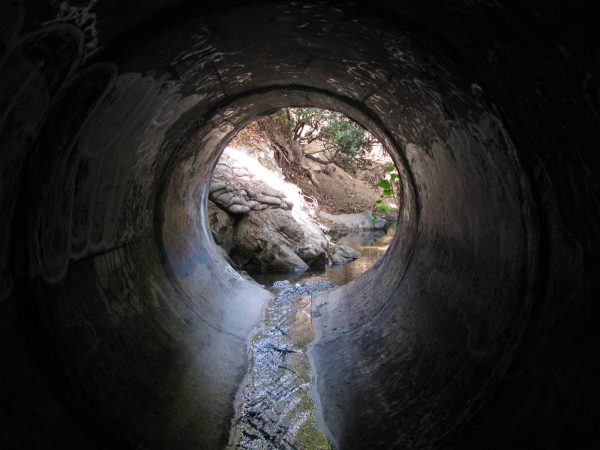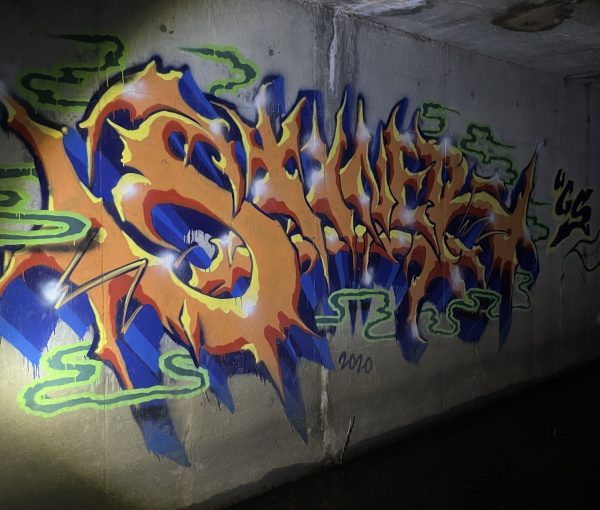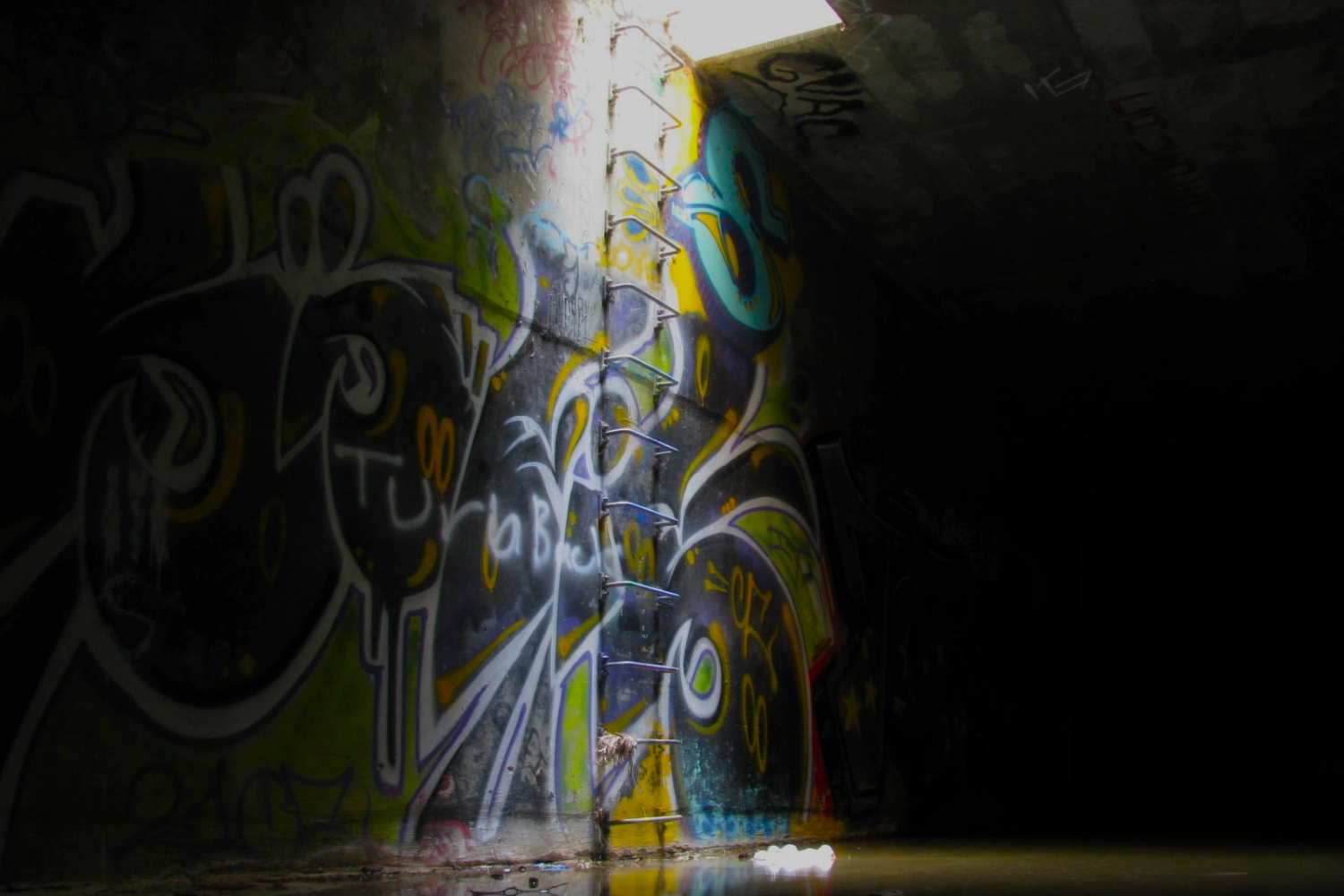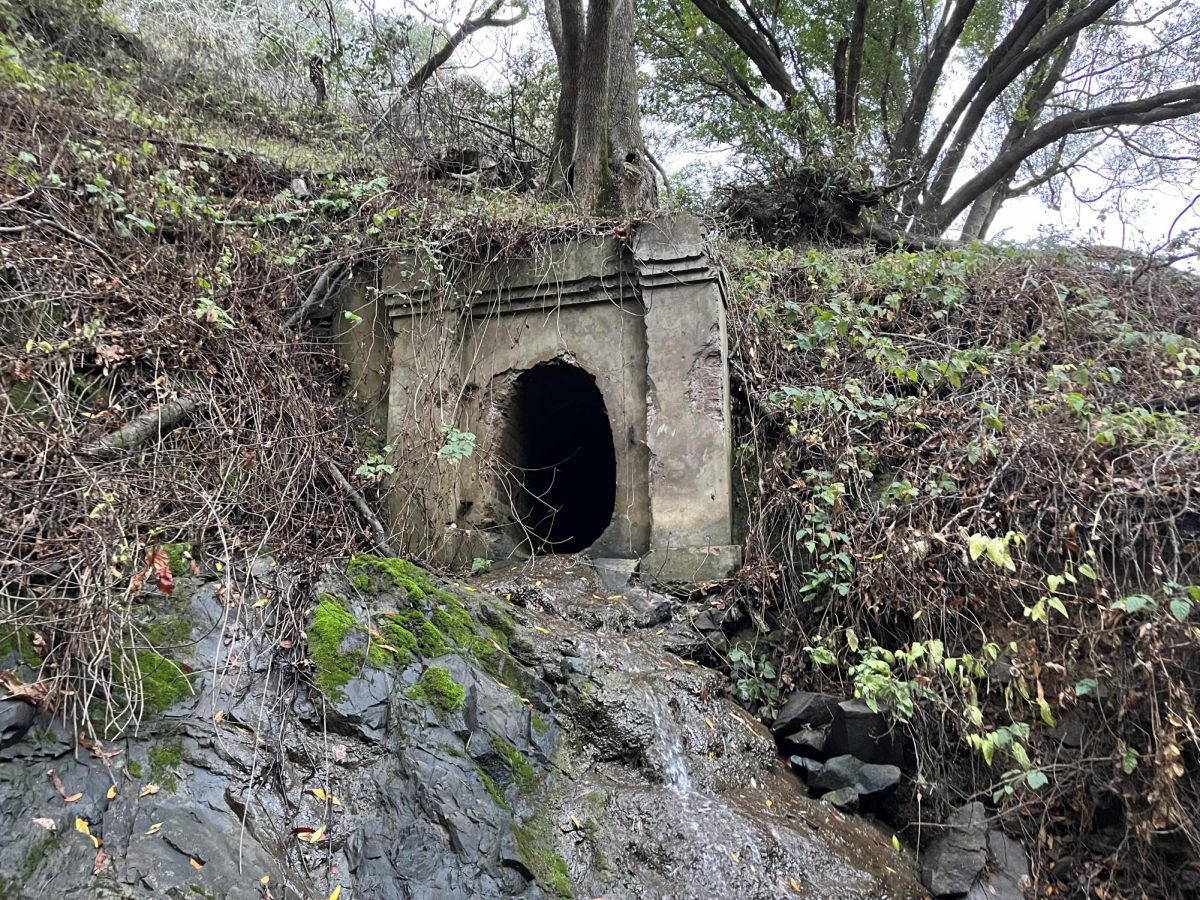Imagine crawling on your hands and knees through sewage, surrounded by a coffin of concrete. The echoes of the tunnel amplify the sound of your footsteps as you walk beneath the surface. This hidden world, while frightening to some, gives an unmatched adrenaline-filled experience to a devoted community of tunnelers.
Liam Taylor*, a high school junior from the South Bay, has explored dozens of drainage tunnels across California.
“Every time I’m in a tunnel, the never-ending anticipation keeps me going, pushing through each obstacle; it’s a never-ending adrenaline rush,” Taylor said.
Shedding light on the hobby
This form of urban exploration goes by many names, such as draining, digging, and, most commonly, tunneling. These tunnels are large pipe structures that carry water out of high-density environments.
“Storm drain infrastructure enables drainage during rain events, so they are significant in preventing flooding,” said Paige Saber, the Senior Civil Engineer at the City of Menlo Park.
These large encompassing tubes serve as easily accessible sites for explorers to travel within.
“What I do are mainly drains because they’re easier to access, more available, and have interesting features,” Taylor said.
With approximately 1400 storm drain inlets in Belmont alone spanning 26 miles, the hobby is readily available to those who wish to explore.
The community
“I’ve made many friends because of tunneling,” Taylor said. “It sounds dumb, but these adrenaline-pumping experiences brought out the kid in me and made me new friends.”
Alongside the adrenaline comes a community of like-minded thrill seekers.
Wyatt Anderson*, a Carlmont student, has explored drainage complexes across the bay for the last five years. Anderson met Taylor online, and together, they developed a friendship.

“Trust is everything while tunneling. When you’re deep underground with no cell reception, you’ve got to have each other’s backs,” Anderson said.
Anderson and Taylor both started their journey through the Urban Exploration Resource, a community-created online forum that urban explorers use to share images, locations, and maps.
Through this forum, Taylor was also able to chat with an early trailblazer of this hobby named “Ironfistdoug.”
“My interactions with online mentors grew my interest,” Taylor said. “Without them, I wouldn’t have been able to do what I love.”
“IronFistDoug,” also known as “Dougo,” is one of the three founders of Cave Clan, an Australian Urbex group formed in 1986, dedicated to exploring Australian drains.
These early trailblazers still participate in the growing hobby and spark motivation in younger generations even when oceans are apart.
Ethical barriers
“We cannot really speak to safety issues related to crawling through or in storm pipes, though it’s clearly not a good idea generally speaking,” said Reid Bogert, the Stormwater Program Director at San Mateo County.
Urban exploration has always been a discussion of morality, with explorers describing it as more of a spectrum of legality.
“It is technically illegal, but it’s not as big of a deal as theft; it’s more complex based on the publicity of the location itself. A general rule of thumb is the more rural a spot is, the better,” Anderson said.
Graffiti is another moral reality of urban installations.
“I don’t personally partake in graffiti, but many artists are involved underground, working on big mural projects that are not visible to the public,” Taylor said, “Some contain political style, and some are honestly surreal.”

While graffiti art is a form of vandalism, it offers a form of expression to the generally younger age demographic who publicly hold back from social articulation.
“GATS (Graffiti Against The System) is a prominent graffiti artist in the community, and every one of his pieces is breathtaking; it really creates more of a memorable experience,” Taylor said.
Even with the legal issues surrounding graffiti, GATS has been featured worldwide, with his artwork being shown in Europe, Asia, the Middle East, Central America, and most presently in the United States.
Apart from these moral dilemmas, many tunnelers have kept up a system of keeping the environment the same as they found it so as not to disturb the tunnels from their current state.
“I don’t do graffiti, even though I appreciate some of the art; spraying it can harm your lungs, especially in a confined space,” Anderson said. “Spray paint can also leave lasting marks on government property, which sort of ruins the atmosphere.”
Challenges to explorers
Drainage within the tunnels also poses an obvious danger.
“I’ve been in a tunnel before when it was raining. It was barely raining, but you’d be surprised at how quickly the tunnel fills up,” Anderson said.
The forceful rush of water can also result in potential injuries.
“The one rule of drain exploring is when it rains, don’t drain.,” Taylor said. “Many have died because they have drowned or slipped from the rushes of water created by valve openings, mini tunnels within the larger complex.”
Just being near the tunnels, the dangers are still present.
According to the County of San Mateo, during storms, it is crucial to keep children away from creeks and large drains, which can be deadly during storms.
However, water is not the only danger; animals have also posed a threat.
“I remember this one time in Milpitas tunneling network, where I and two friends encountered a bat gliding across the tunnel exit. We got right out of there!” Taylor said.
Bats can be dangerous due to the large teeth in some species that can puncture through the skin and cause serious harm. Although rare, they can carry some viruses that can also be fatal to humans. Besides the creatures these environments contain, the hidden danger exists beyond apparent visual concerns to those of smell.
“The danger within tunnels is always real, especially with hydrogen sulfide, which, while having a strong smell like rotten eggs, can sometimes go under our noses in the face of more sudden, physical danger,” Anderson said.
Hydrogen sulfide is a hazardous gas created from animal and plant breakdown and poses a hidden risk within the tunnels.
According to the Occupational Safety and Health Administration, effects range from mild headaches or eye irritation to very serious unconsciousness and death.
“In one of my experiences in a local San Carlos tunnel, we saw a decomposing coyote outside of an entrance, and you could smell it well into the tunnel,” Anderson said.
In order to prevent these hazardous gasses, both Anderson and Taylor have implemented protective measures.
“I’ve brought a respirator since I really started exploring. Research online has opened my eyes to the hidden danger of toxic airborne compounds,” Taylor said.
Anderson also uses a special meter to determine the level of hydrogen sulfide, which he implemented after he experienced firsthand the danger of decomposing waste. Tunnels also facilitate personal struggles through the unique environment.
“Tunneling helped me with my fear of the dark,” Taylor said. “I’ve had a fear of the dark throughout middle school, and I was always inclined to put myself in it to test my mental strength. As a side effect of exploring tunnels, it helped me overcome it.”
Besides the mental barriers, explorers take on the physical burden of being in a cramped space.
“Tunnels can be seriously demanding. The physical strain on your body is beyond painful and takes a toll on your body,” Anderson said.
Much of the exhaustion stems from having to crawl for hours on end with limited visibility.
A digital future
“Drainage tunneling will always be the same; its main evolution is through social media. More people are posting their explorations and are documenting their findings because there are easily accessible platforms for others in the hobby to connect with,” Taylor said.
Videos on TikTok and YouTube showcasing this growing hobby have amassed millions of views.
“My feed on YouTube is filled with videos about tunneling and exploring; it’s honestly insane how big of an audience there is,” Anderson said.
Through the internet, those interested in the hobby have access to maps, videos, and forums, all dedicated to educating those curious.
“It’s now easier than ever for beginners to get into the hobby,” Anderson said. “But on the other hand, the more popular exploration becomes, the more negativity will be spread about the community.”
Tunneling may have an uncertain future, but there will always be more to explore and more people to join.
“There is always the never-ending anticipation of what could be down there that will keep me and many others coming back for more,” Taylor said.
*Liam Taylor and Wyatt Anderson names have been changed because of the legal risks associated with Tunneling in accordance with Carlmont Media’s anonymous sourcing policy






